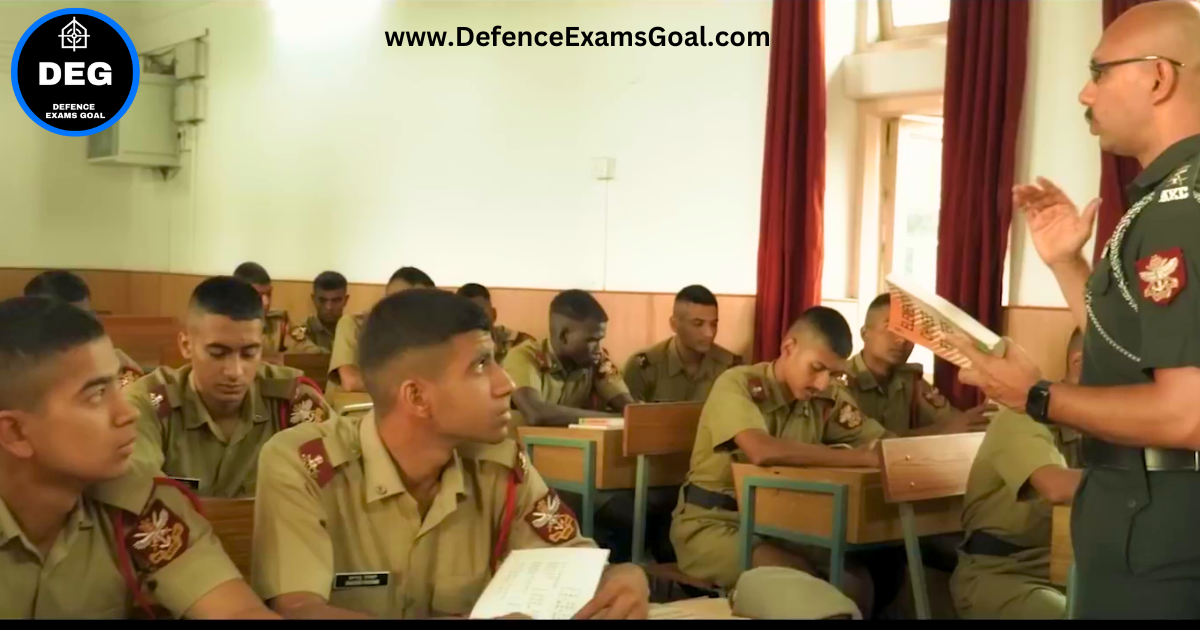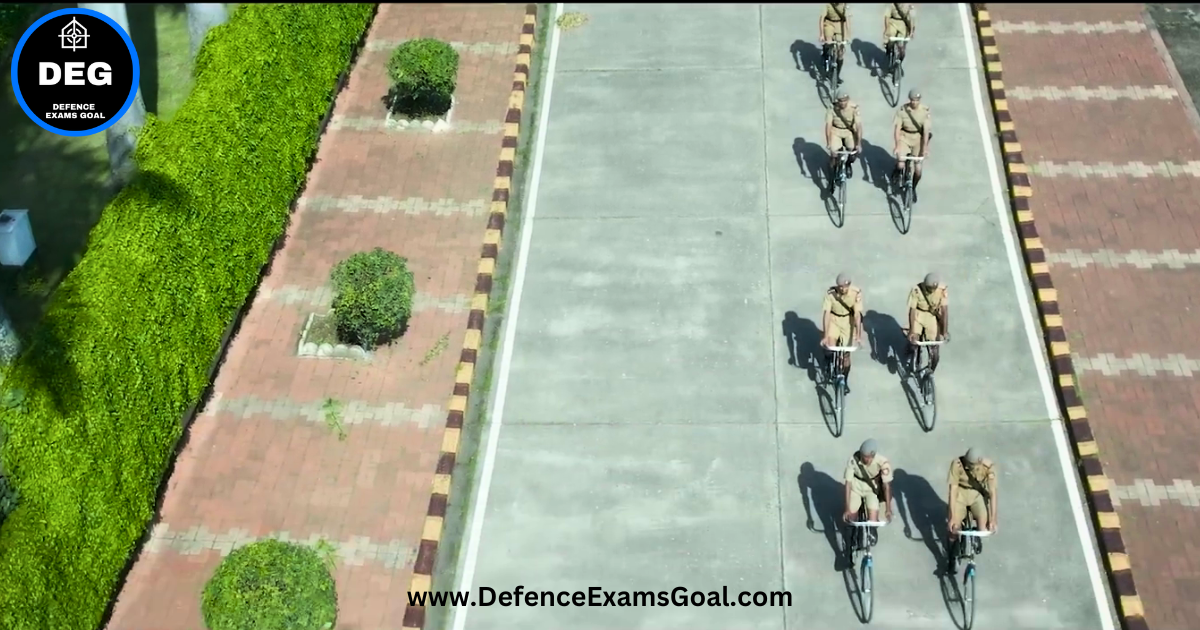NDA Syllabus 2025: Avoid These Mistakes in Subject-wise Syllabus & Exam Pattern

The Union Public Service Commission (UPSC) holds the National Defence Academy (NDA) Exam two times each year. The NDA Exam is the means by which the UPSC recruits candidates to fill the ranks of the Indian Army, Navy, and Air Force as officers. Aspirants to the NDA must have in hand a detailed understanding of the NDA syllabus 2025 if they wish to have any hope of not just passing the exam but also securing a position within the NDA itself.
This guide offers an elaborate syllabus, arranged by subject, for NDA 2025. It not only encompasses the realms of Mathematics and General Ability Test (GAT) in the form of NDA Syllabus 2025, but also serves as a repository of handy prep tips and weighty FAQs on confusing topic NDA Syllabus 2025.

NDA Exam Pattern 2025 at a Glance
| Name of the Exam | National Defence Academy, NDA |
| Exam Conducting Body | Union Public Service Commission, UPSC |
| Frequency of NDA Exam | Two times a year
|
| Selection Process | Written Test consisting of Objective Type Questions Intelligence & Personality Test (SSB) |
| Mode of exam | Offline |
| Total Papers in NDA Exam |
|
| Total Marks for NDA Exam | Total: 900 Marks
|
| Total No. of Questions |
|
| Negative Marking |
|
| Exam Duration |
|
PAPER -I NDA Mathematics Exam Pattern
| Paper I- Mathematics | |
| Total Marks | 300 Marks |
| Total No. of Questions | 120 |
| Marks awarded for Correct answer | 2.5 marks |
| Marks deducted for the wrong answer | -0.83 |
| Exam Duration | 2.5 Hours |
NDA Mathematics Syllabus Detailed Breakup
The syllabus has been inspired from the official NDA Notification 2025 by UPSC.
| Topic | Topic-wise Syllabus |
| Algebra | Concept of set, operations on sets, Venn diagrams. De Morgan laws, Cartesian product, relation, equivalence relation. Real numbers, Complex numbers, Modulus, Cube roots, Conversion of a number in a Binary system to Decimals, and vice-versa. Arithmetic, Geometric and Harmonic progressions. Quadratic equations, Linear inequations, Permutation and Combination, Binomial theorem, and Logarithms. |
| Calculus | Concept of a real-valued function, domain, range, and graph of a function. Composite functions, one-to-one, onto, and inverse functions. The notion of limit, Standard limits, Continuity of functions, algebraic operations on continuous functions. Derivative of function at a point, geometrical and physical interpretation of a derivative-application. Derivatives of sum, product, and quotient of functions, a derivative of a function concerning another function, the derivative of a composite function. Second-order derivatives. Increasing and decreasing functions. Application of derivatives in problems of maxima and minima |
| Matrices and Determinants | Types of matrices, operations on matrices. Determinant of a matrix, basic properties of determinants. Adjoint and inverse of a square matrix, Applications-Solution of a system of linear equations in two or three unknowns by Cramer’s rule and by Matrix Method. |
| Integral Calculus and Differential Equations | Integration as inverse of differentiation, integration by substitution and by parts, standard integrals involving algebraic expressions, trigonometric, exponential, and hyperbolic functions. Evaluation of definite integrals—determination of areas of plane regions bounded by curves—applications. Definition of order and degree of a differential equation, formation of a differential equation by examples. General and particular solution of differential equations, solution of the first order, and first-degree differential equations of various types—examples. Application in problems of growth and decay. |
| Trigonometry | Angles and their measures in degrees and radians. Trigonometric ratios. Trigonometric identities Sum and difference formulae. Multiple and Sub-multiple angles. Inverse trigonometric functions. Applications-Height and distance, properties of triangles. |
| Vector Algebra | Vectors in two and three dimensions, magnitude, and direction of a vector. Unit and null vectors, the addition of vectors, scalar multiplication of a vector, scalar product, or dot product of two vectors. Vector product or cross product of two vectors. Applications—work done by a force and moment of a force and in geometrical problems. |
| Analytical Geometry Of Two and Three Dimension | Rectangular Cartesian Coordinate system. Distance formula. Equation of a line in various forms. The angle between two lines. Distance of a point from a line. Equation of a circle in standard and a general form. Standard forms of parabola, ellipse, and hyperbola. Eccentricity and axis of a conic. Point in a three-dimensional space, the distance between two points. Direction Cosines and direction ratios. Equation two points. Direction Cosines and direction ratios. Equation of a plane and a line in various forms. The angle between two lines and the angle between two planes. Equation of a sphere. |
| Statistics and Probability | Probability: Random experiment, outcomes, and associated sample space, events, mutually exclusive and exhaustive events, impossible and certain events. Union and Intersection of events. Complementary, elementary, and composite events. Definition of probability—classical and statistical—examples. Elementary theorems on probability—simple problems. Conditional probability, Bayes’ theorem—simple problems. Random variable as function on a sample space. Binomial distribution, examples of random experiments giving rise to Binomial distribution. |
NDA Mathematics Topics wise weightage
| Topic | Questions |
| Calculus | 20-25 |
| Quadratic equation | 20-15 |
| Matrices & Determinants | 30 |
| Probability | 10 |
| Trigonometry | 30 |
| Complex number | 10-15 |
❌ Not all students find Calculus easy and many find the initial concepts quite difficult to understand. This is especially true for the very concept of a limit, which is fundamental to the entire discipline of Calculus. Even well-prepared high school students can falter when they first try to grasp not only what a limit is, but also what it means. Although the basic ideas concerning limits are fairly straightforward, they can and do lead to some very complex situations.
❌ Not measures of central tendency but central tendency itself.
❌ Not rules of probability but probability itself.
✔️ Bayes’ theorem.
✔️ Variance and standard deviation.
NDA General Ability Test (GAT) Syllabus 2025 (Paper II)
General Ability Test Exam Pattern
| Paper-II- General Ability Test (NDA Syllabus 2025) | |
| Total Marks | 600 marks |
| Total No. of Questions | 150 |
| No. of questions in English Section | 50 |
| No. Of questions in the General Knowledge Section | 100 |
| Maximum Marks for English | 200 marks |
| Maximum Marks for G.K. | 400 marks |
| Marks for Correct Answer | 4 marks in both sections |
| Marks for Incorrect Answer | -1.33 marks in both sections |
| Exam Duration | 2.5 Hours |
NDA English Syllabus 2025
In the NDA Syllabus 2025, the English portion is Part A of Paper 2 (General Ability Test – GAT) in the NDA 2025 written exam. Scoring well in this section necessitates that candidates have a habit of reading newspapers daily. This practice will certainly boost their vocabulary, reading comprehension, and general command over the medium of English.
It is also a good idea to write down the words they find hard, to understand their meanings, and to then use those words in some context or other to ensure that they know them well enough for the reading comprehension and vocabulary-based questions that are sure to appear in the GAT.
This section evaluates applicants on grammar, vocabulary, and formal language usage. Here is a detailed breakdown of the major areas of the NDA English syllabus.
| Topic | No. of Questions | No. of Marks |
| Spotting Errors | 5 | 20 |
| Comprehension | 6 | 24 |
| Selecting Words | 10 | 40 |
| Ordering of Words in a Sentence | 9 | 36 |
| Sentence Improvement | 10 | 40 |
| Antonyms | 5 | 20 |
| Synonyms | 5 | 20 |
| Total | 50 | 200 |
PART-II NDA General Knowledge Syllabus 2025
Part-II of the NDA 2025 written exam is known as the General Knowledge section. It is part of Paper 2, which is termed as the General Ability Test (GAT). This test assesses candidates on a vast range of subjects, which basically cover what a student would learn up till the 10+2 level in different streams.
The subjects include Physics, Chemistry, General Science; the test also covers what students would generally learn in Social Studies, including History and Civics, as well as Geography. Current Affairs also form a part of the syllabus.
Although the subjects listed below are not complete, candidates should cultivate a thorough knowledge base to excel in this section. Below is an overview of the NDA General Knowledge syllabus:
Fundamental principles, practical applications, and recent advancements in basic subjects are the keys to scoring well in the NDA exam’s General Knowledge section. Candidates should pay close attention to these areas.
| Topic | No. of Questions | No. of Marks |
| Physics | 23 | 92 |
| Chemistry | 16 | 64 |
| General Science | 11 | 44 |
| History & Freedom Movement | 16 | 64 |
| Geography | 17 | 68 |
| Current Affairs | 17 | 68 |
| Total | 100 | 400 |
NDA Physics Syllabus 2025
| Topics | Description |
| Physical characteristics | Properties of matter and its states. |
| Archimedes principle | Buoyant force and its application. |
| Newton’s Laws of Motion | Principles governing the motion of objects. |
| Gravitation | Law of universal gravitation and its effects. |
| Work, Power, and Energy | Basic concepts and their interrelations. |
| Heat | Effects of heat, temperature, and heat transfer. |
| Light and Sound | Properties of light, reflection, refraction, sound waves, and musical instruments. |
| Magnetism and Electricity | Earth as a magnet, electrical power, conductors, Ohm’s Law, magnetic effects of current. |
| Simple Machines and Tools | Principles and functions of various tools and machines. |
NDA Chemistry Syllabus 2025
| Topics | Description |
| Chemical and physical changes | Characteristics of changes in matter. |
| Law of Chemical Combination | Fundamental principles of chemical combinations. |
| Elements, Mixtures, and Compounds | Basics of substances and their compositions. |
| Hydrogen, Oxygen, Nitrogen, Carbon Dioxide | Preparation, properties, and reactions of gases. |
| Salts, Bases, and Acids | Properties and reactions of common chemicals. |
| Carbon Varieties | Different forms of carbon. |
| Materials Manufacturing | Production of various substances such as soap, glass, ink, and paints. |
| Atomic Structure and Valency | Basics of atomic structure, molecular weights, and valency. |
NDA General Science Syllabus 2025
| Topics | Description |
| Living and Non-living Things | Distinctions between living and non-living entities. |
| Basis of Life | Tissues, protoplasm, and cells. |
| Human Body Organs | Major organs and their functions. |
| Epidemics and Food | Causes and prevention of common epidemics, human dietary components. |
| Solar System and Scientists | The Solar System, comets, meteors, eclipses, and contributions of renowned scientists. |
NDA History Syllabus 2025
| Topics | Description |
| Indian History | Comprehensive examination focusing on culture, civilization, and the Indian Freedom Movement. |
| Indian Government and Constitution | Basic understanding of the Indian government and constitution. |
| Social and Political Movements | Teachings of Mahatma Gandhi, Bhoodan, Sarvodaya, and modern world influences. |
| World History | Renaissance, exploration, and revolutions, including the Industrial Revolution, Russian Revolution, and French Revolution. |
| Science and Technology Impacts | Social effects of science and technology. |
| Global Concepts and India’s Role | United Nations, Panchsheel, Democracy, Socialism, Communism, and India’s role in the modern world. |
NDA Geography Syllabus 2025
| Topics | Description |
| Earth’s Dimensions and Movements | Size, shape, movements, consequences, and genesis of the Earth. |
| Rocks and Weathering | Classification of rocks, weathering processes, earthquakes, and volcanoes. |
| Climate and Natural Regions | Climate types, natural regions, ocean currents, atmospheric phenomena, and India’s regional geography. |
| India’s Resources and Trade Routes | Resources, industrial and agricultural activities, important seaports, and trade routes. |
NDA Current Events Syllabus 2025
| Topics | Description |
| India and Global Developments | Knowledge of significant current events in India and worldwide. |
| Prominent Figures | Recognition of important personalities in sports, culture, and global affairs. |
Preparation Strategy to cover NDA Syllabus 2025
✅ Tips for NDA Mathematics Preparation
✔️ Concentrate on NCERT textbooks and fundamental ideas before progressing to higher-level challenges.
✔️ Work through the examinations of prior years to grasp the types of questions that are asked.
✔️ Take practice tests on a regular basis to enhance your quickness and precision.
✅ Tips for NDA GAT Preparation
✔️ Enhance your English language skills by perusing both the dailies and the novels.
✔️ Make it a habit to read the news related to current affairs and defence on a daily basis.
✔️ Revise the topics of history, geography, and science from NCERT books.
✔️ Write out the answers to objective-type questions.
Final Words on NDA Syllabus 2025
To succeed in the NDA Syllabus 2025 , it is necessary to have a structured approach and disciplined preparation. Concentrate on grasping the concepts, carry out regular practice, and make sure to be in the loop regarding current affairs.
💡 To get more tips on how to prepare for the NDA Syllabus 2025 and mor and to obtain free study materials, continue to follow [Defence Exams Goal](https://defenceexamsgoal.com). 🚀
FAQs on NDA Syllabus 2025
Is NDA Maths difficult?
The challenge is rated from moderate to high. It is not easy, but practice, done properly, tends to make the activity easier.
What is the best book for NDA Mathematics?
Best books: NCERT Mathematics (Class 11 and 12), RS Aggarwal, and Pathfinder for the NDA.
What is the weightage of English in NDA?
The section on English has 200 marks and is a very important scoring segment.
Can I skip any subject in NDA GAT?
No, the overall merit ranking is not affected if some sections are omitted. All sections are important for the overall merit ranking.
How to prepare for NDA in 6 months?
Prepare a schedule that encompasses every subject. Work with the papers from prior years and also take practice exams. Maintain discipline and work on the parts of the material that are problematic.




